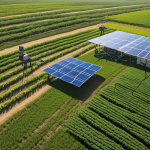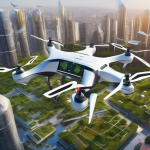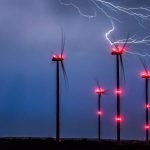The Future of Smart Agriculture: AI and Tech in Farming

In today’s fast-paced world, artificial intelligence (AI) and technology are not just buzzwords; they are the driving forces behind a revolution in agriculture. Imagine a future where farmers can predict weather patterns, monitor crop health in real-time, and optimize resource use—all from the comfort of their homes. This is the promise of smart agriculture, where innovation meets tradition to create a more secure food future.
As we delve deeper into this transformative journey, we see how AI technology is reshaping farming practices. Through predictive analytics, farmers can anticipate crop yields and market demands, allowing them to make informed decisions that maximize their productivity. Automation plays a crucial role, too, as it streamlines labor-intensive tasks, freeing up time for farmers to focus on strategy and growth.
But what exactly does this mean for the environment? Well, the integration of technology in agriculture goes beyond just efficiency—it also promotes sustainability. By utilizing precision agriculture techniques, farmers can monitor and manage field variability, which optimizes resource use and minimizes waste. This not only leads to healthier crops but also reduces the environmental impact of farming practices.
One of the standout innovations in this field is drone technology. These flying marvels provide unparalleled aerial imagery and data collection capabilities. With drones, farmers can easily monitor crop health, assess irrigation needs, and even detect pest infestations before they become a significant problem. The benefits are clear:
| Benefits of Drone Usage | Description |
|---|---|
| Increased Efficiency | Drones can cover large areas quickly, saving time and labor. |
| Reduced Labor Costs | Automation of monitoring tasks reduces the need for manual labor. |
| Enhanced Data Accuracy | Drones provide precise data that can improve decision-making. |
However, like any emerging technology, drone implementation comes with its own set of challenges. Farmers must navigate regulatory hurdles and often face high initial costs, which can be daunting. Yet, the potential for smarter farming practices makes overcoming these obstacles worth the effort.
As we look forward, the role of the Internet of Things (IoT) and smart sensors cannot be overlooked. These technologies enable real-time monitoring and data collection, allowing farmers to respond swiftly to changing conditions. By embracing these advancements, the agricultural sector is not just surviving; it is thriving, paving the way for a sustainable future.
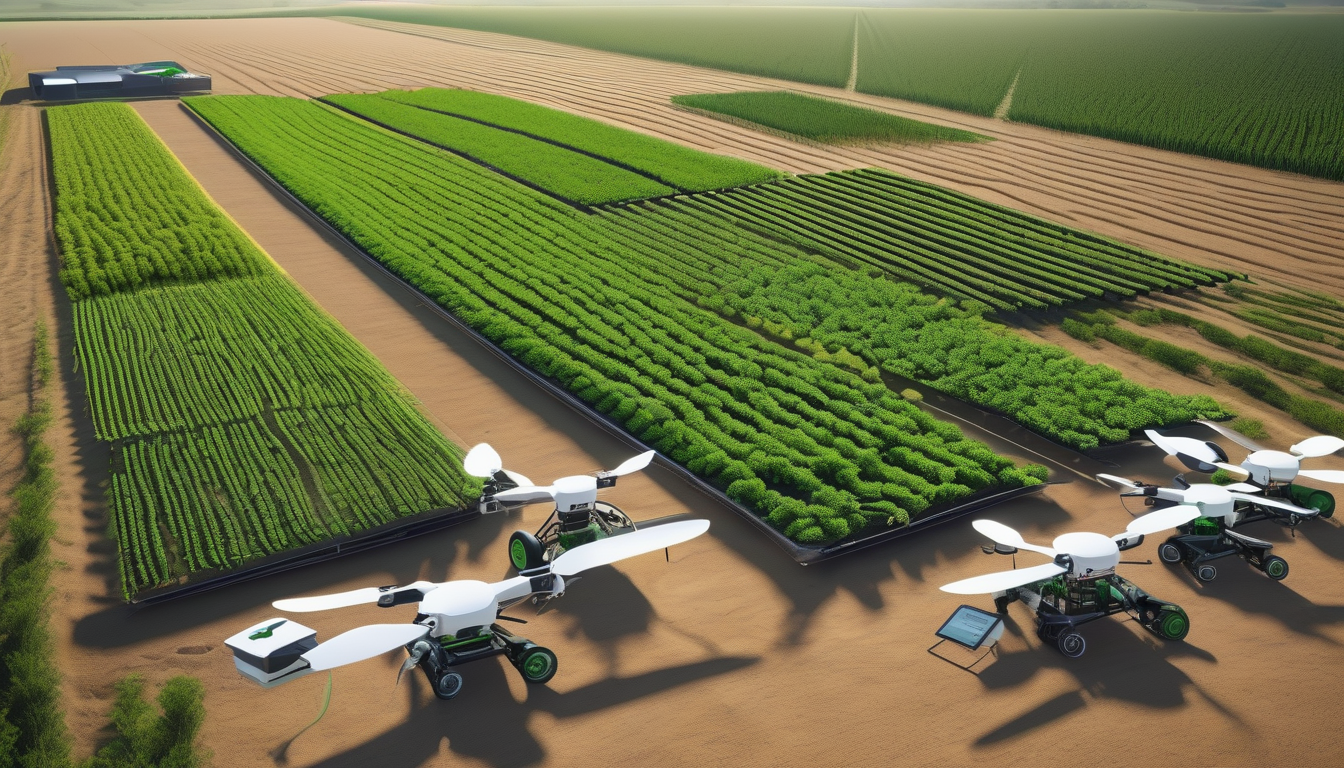
Advancements in AI Technology
Artificial intelligence (AI) technology is creating a seismic shift in the agricultural landscape, acting as a catalyst for change that many farmers have been waiting for. Imagine a world where farmers can predict crop yields, identify pests before they become a problem, and automate tedious tasks—all thanks to the power of AI. This isn’t just a dream; it’s happening right now! With the integration of predictive analytics, farmers can analyze weather patterns, soil conditions, and market trends to make data-driven decisions that enhance productivity.
One of the most exciting advancements is the use of AI in automation. Tasks that once required hours of manual labor can now be performed by autonomous machines. For instance, AI-powered tractors can plow fields, plant seeds, and even harvest crops with minimal human intervention. This not only saves time but also reduces labor costs, allowing farmers to focus on more strategic aspects of their operations.
Moreover, AI is enabling data-driven decision-making. Farmers can now collect vast amounts of data from their fields using sensors and satellite imagery, which AI algorithms can analyze to provide actionable insights. This means that farmers can optimize their resource use—be it water, fertilizers, or pesticides—leading to increased yields and reduced waste. The result? A more efficient farming operation that is better equipped to meet the demands of a growing population.
To illustrate the impact of AI on farming, consider the following table showcasing key advancements:
| Technology | Description | Benefits |
|---|---|---|
| Predictive Analytics | Analyzes data to forecast crop performance | Informed decision-making, improved yields |
| Automation | Uses machines for planting and harvesting | Reduced labor costs, increased efficiency |
| Data Collection | Gathers real-time data from fields | Optimized resource use, reduced waste |
In conclusion, the advancements in AI technology are not just enhancing agricultural practices; they are redefining what is possible in farming. As we embrace these innovations, the future looks promising for a more sustainable and productive agricultural sector.
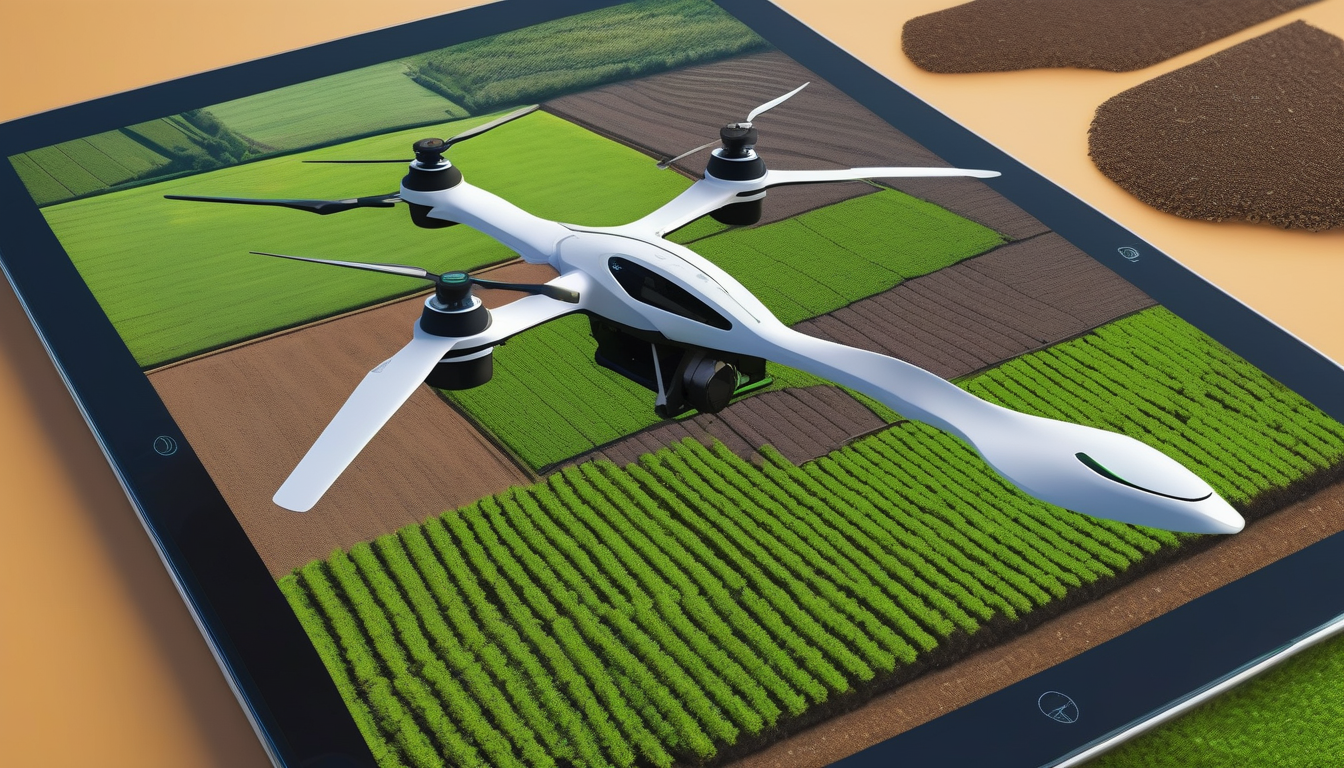
Precision Agriculture Techniques
In the ever-evolving landscape of modern farming, precision agriculture stands out as a game-changer. By harnessing advanced technologies, farmers can now monitor and manage the variability within their fields with unparalleled accuracy. Imagine being able to tailor your farming practices to the specific needs of each section of your land, just like a tailor fits a suit to a client’s unique measurements. This approach not only optimizes resource use but also significantly enhances crop management.
At the heart of precision agriculture are various technological tools that enable farmers to collect and analyze data in real-time. These tools include satellite imagery, GPS technology, and sophisticated software platforms. By integrating these technologies, farmers can make informed decisions that lead to improved yields and reduced environmental impact. For instance, by utilizing satellite data, farmers can identify areas that require more attention, such as those suffering from nutrient deficiencies or pest infestations.
Another exciting aspect of precision agriculture is its ability to promote sustainable practices. By accurately assessing the needs of crops, farmers can minimize the use of fertilizers and pesticides, which not only cuts costs but also reduces chemical runoff into nearby water sources. This is where the synergy between technology and sustainability becomes evident, creating a win-win situation for both farmers and the environment.
Moreover, precision agriculture techniques can be categorized into several key areas:
- Soil Mapping: Understanding soil variability through detailed mapping allows farmers to apply the right amount of nutrients where they are needed most.
- Variable Rate Technology (VRT): This technique enables the application of inputs at varying rates across a field, ensuring optimal resource use.
- Crop Health Monitoring: Utilizing sensors and drones, farmers can continuously monitor the health of their crops, allowing for timely interventions.
In conclusion, precision agriculture techniques are revolutionizing the way we approach farming. By embracing these innovations, farmers are not only enhancing their productivity but also paving the way for a more sustainable future. As we move forward, it’s clear that the integration of technology in agriculture is not just a trend; it’s a necessity for securing our food systems.
Drone Technology in Farming
In the ever-evolving world of agriculture, drone technology is making waves like never before. Imagine being able to survey vast fields from the sky, capturing real-time data that can lead to smarter farming decisions. Drones are not just fancy gadgets; they are becoming essential tools in modern agriculture, offering a bird’s-eye view of crop health and field conditions. This technology allows farmers to monitor their lands more efficiently, leading to increased yields and reduced waste.
One of the most exciting applications of drones in farming is their ability to provide high-resolution aerial imagery. This imagery allows farmers to assess crop health by identifying problem areas that may require additional attention. For instance, areas suffering from pest infestations or nutrient deficiencies can be pinpointed quickly, enabling targeted interventions. This level of precision is a game-changer, making traditional methods of scouting look like a thing of the past.
Moreover, drones can assist in irrigation management. By analyzing moisture levels across different sections of a field, farmers can optimize their irrigation systems. This not only conserves water but also ensures that crops receive the right amount of moisture at the right time. Imagine being able to water your plants just like a chef adds the perfect amount of seasoning to a dish—just enough to enhance growth without wasting resources.
However, embracing drone technology isn’t without its challenges. Farmers often face regulatory hurdles related to airspace and privacy concerns. Additionally, the initial costs of purchasing and maintaining drones can be daunting. Despite these obstacles, the benefits of integrating drones into farming practices are hard to ignore. Here’s a quick look at some of the key advantages:
- Increased efficiency in monitoring crops
- Reduction in labor costs
- Enhanced data accuracy for better decision-making
As we look to the future, it’s clear that drone technology holds immense potential for transforming agriculture. By harnessing the power of these flying machines, farmers can achieve unprecedented levels of efficiency and sustainability. The sky is truly the limit when it comes to the possibilities that drones bring to the field.
Benefits of Drone Usage
When it comes to modern agriculture, drones are the new superheroes! These flying gadgets are not just cool tech toys; they are transforming the way farmers operate. Imagine having a bird’s eye view of your entire farm, allowing you to spot issues before they escalate. That’s the kind of power drones bring to the table. With their ability to collect data and provide real-time insights, farmers can make informed decisions that lead to increased efficiency and productivity.
One of the most significant benefits of drone usage is increased efficiency. Traditional farming methods often require manual labor for tasks like crop monitoring and irrigation management. Drones can cover large areas in a fraction of the time, allowing farmers to focus on other critical tasks. This not only saves time but also reduces labor costs significantly. Think about it: less time spent walking the fields means more time for strategic planning and innovation!
Moreover, drones enhance data accuracy. They provide high-resolution imagery that helps in assessing crop health, soil conditions, and even pest infestations. This level of detail is something that the human eye simply can’t achieve. With accurate data at their fingertips, farmers can pinpoint exactly where to apply fertilizers or pesticides, which minimizes waste and maximizes yield. For instance, a drone can identify areas of a field that are underperforming, allowing for targeted interventions that can lead to improved harvests.
Another fantastic aspect of using drones is their role in environmental sustainability. By optimizing resource usage—like water and fertilizers—drones help reduce the overall environmental impact of farming. This is crucial in a world where sustainability is becoming a top priority. With drones, farmers can implement precision agriculture techniques that ensure resources are used efficiently, thus protecting our planet for future generations.
In summary, the benefits of drone usage in agriculture are clear: increased efficiency, enhanced data accuracy, and a commitment to sustainability. As technology continues to evolve, it’s exciting to think about how drones will further innovate farming practices. So, are you ready to embrace the future of agriculture?
Challenges of Drone Implementation
While drones are reshaping the landscape of modern agriculture, implementing this technology comes with its own set of challenges. First off, there’s the regulatory hurdles. Farmers must navigate a maze of regulations and guidelines set forth by aviation authorities, which can vary significantly from one region to another. These regulations often dictate where and how drones can be flown, limiting their potential use in vast agricultural fields.
Another significant challenge is the high initial costs associated with acquiring and maintaining drone technology. For many farmers, especially those operating on a tight budget, the investment in drones, software, and training can feel daunting. It’s not just about buying the drone; it’s also about the ongoing costs of data analysis and maintenance, which can quickly add up.
Moreover, there’s the issue of technical expertise. Operating drones and interpreting the data they collect requires a certain level of skill and knowledge. Many farmers may find themselves overwhelmed by the learning curve involved. It’s akin to trying to learn a new language; without proper training, the nuances can be lost, and the potential benefits may not be fully realized.
Additionally, weather conditions can also pose a challenge. Drones are sensitive to wind, rain, and other environmental factors that can hinder their effectiveness. Farmers need to time their drone flights carefully to ensure optimal data collection, which can complicate planning and operations.
Finally, there’s the public perception of drones. Some communities may view drones with skepticism or concern, fearing privacy violations or safety issues. Farmers must actively engage with their communities to educate them about the benefits of drone technology and address any concerns that may arise.
In summary, while the advantages of using drones in agriculture are clear, overcoming these challenges is crucial for farmers looking to harness their full potential. By addressing regulatory issues, managing costs, enhancing technical skills, considering environmental factors, and fostering community acceptance, the agricultural sector can truly benefit from this innovative technology.
IoT and Smart Sensors
The Internet of Things (IoT) and smart sensors are revolutionizing the way we approach agriculture. Imagine a farm where every plant is monitored in real-time, where data flows seamlessly from the field to the farmer’s smartphone. This is not science fiction; it’s the power of IoT in action! By integrating sensors into farming practices, farmers can gather crucial data about soil moisture, temperature, and nutrient levels, enabling them to make informed decisions that enhance crop yields and sustainability.
These smart sensors act like the farmer’s eyes and ears in the field. They provide constant feedback, allowing for immediate adjustments to be made. For instance, if the soil moisture level drops below a certain threshold, the sensors can trigger irrigation systems automatically. This not only conserves water but also ensures that crops receive the necessary hydration at the right time. It’s like having a personal assistant who never sleeps, always watching over your crops!
Moreover, the data collected can be analyzed to identify trends over time. Farmers can use this information to optimize planting schedules, crop rotation, and even pest management strategies. By leveraging this data, they can reduce waste and increase efficiency. In fact, a recent study showed that farms utilizing IoT technology saw a 20% increase in productivity on average. Isn’t that impressive?
However, implementing IoT and smart sensors does come with its challenges. The initial setup costs can be daunting for some farmers, especially those operating on a tight budget. Additionally, there’s a learning curve involved in understanding how to interpret the data effectively. But the long-term benefits often outweigh these initial hurdles. Farmers who embrace this technology are not just investing in their own future; they are also contributing to a more sustainable food system.
In summary, the integration of IoT and smart sensors in agriculture is paving the way for a new era of farming. With real-time data at their fingertips, farmers can make smarter decisions that lead to healthier crops and a healthier planet. The future of agriculture is bright, and it’s all thanks to technology!
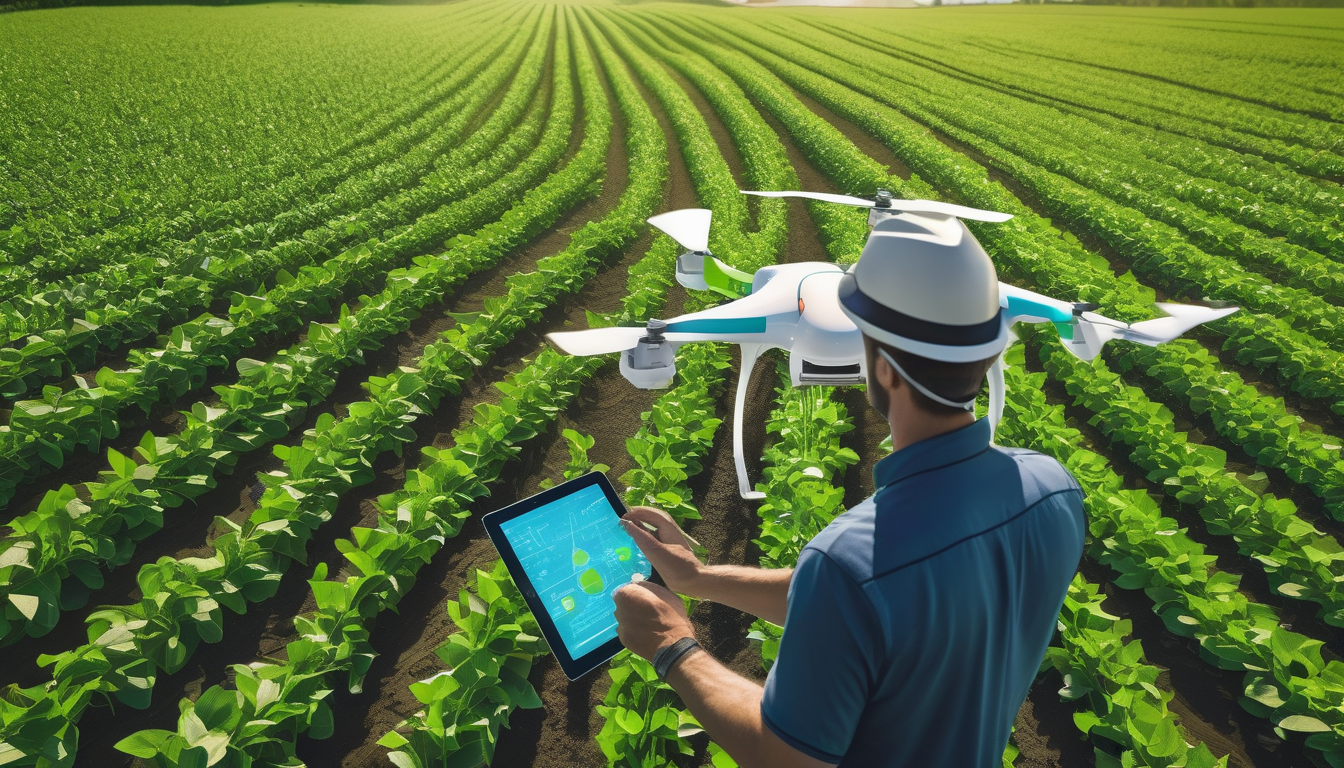
Sustainable Farming Practices
Sustainability is not just a buzzword; it’s the heartbeat of modern agriculture. As the world grapples with climate change and resource depletion, farmers are turning to innovative solutions that not only enhance productivity but also protect our precious environment. The integration of AI and cutting-edge technology in farming is paving the way for practices that are both economically viable and ecologically sound.
One of the most exciting aspects of sustainable farming is the way it promotes eco-friendly practices. Farmers are now able to make data-driven decisions that reduce waste and optimize resource use. For instance, by utilizing precision agriculture techniques, they can apply fertilizers and pesticides only where needed, minimizing chemical runoff and preserving the ecosystem. This targeted approach not only benefits the environment but also boosts crop yields.
Moreover, technology plays a pivotal role in water management. With the help of smart sensors and IoT devices, farmers can monitor soil moisture levels in real-time, ensuring that irrigation is efficient and effective. This not only conserves water but also enhances crop health. Imagine being able to water your plants just the right amount, every single time! It’s like having a personal assistant for your crops.
Another critical aspect of sustainable farming is soil health monitoring. Healthy soil is the foundation of productive farming, and with AI, farmers can track soil conditions more accurately than ever before. This technology allows them to assess nutrient levels, pH balance, and microbial activity, enabling them to make informed decisions that improve soil health over time. As a result, farmers can cultivate crops that are not only more resilient but also require fewer inputs.
In conclusion, sustainable farming practices are not just a trend; they are a necessity for the future of agriculture. By embracing technology and innovative methods, farmers are not only securing their livelihoods but also safeguarding the planet for generations to come. The journey towards sustainability is ongoing, but with the right tools and mindset, the future of farming looks brighter than ever.
Water Management Solutions
Effective water management is not just a luxury; it’s a necessity for sustainable farming. With the increasing challenges of climate change and water scarcity, farmers are turning to innovative technologies that help them optimize irrigation systems and conserve precious water resources. Imagine having a system that can tell you exactly when and how much to water your crops, reducing waste and ensuring that your plants get the hydration they need. This is where modern technology comes into play.
One of the most exciting advancements in this field is the use of smart irrigation systems. These systems utilize sensors and data analytics to monitor soil moisture levels in real-time. By integrating weather forecasts and soil data, farmers can make informed decisions about when to irrigate, which not only saves water but also enhances crop yields. For instance, a study showed that farms using smart irrigation systems can reduce water use by up to 30% while still increasing their crop productivity.
Additionally, the Internet of Things (IoT) plays a crucial role in water management. IoT devices can collect data from various sources, such as weather stations and soil sensors, and provide farmers with actionable insights. This technology allows farmers to automate irrigation schedules based on real-time data, ensuring that crops receive the right amount of water at the right time. It’s like having a personal assistant for your fields!
Despite these advancements, there are still challenges that farmers face in implementing these solutions. The initial investment in technology can be daunting, especially for small-scale farmers. However, the long-term benefits far outweigh the costs. Not only do these solutions lead to better water conservation, but they also contribute to healthier crops and improved soil quality.
In conclusion, as we move towards a more sustainable future, the integration of technology in water management will be vital. By utilizing smart irrigation systems and IoT devices, farmers can ensure that they are not only meeting the demands of today but also preserving resources for future generations. It’s a win-win situation for both the farmers and the environment!
Soil Health Monitoring
Maintaining soil health is essential for ensuring robust crop productivity and sustainability in agriculture. In today’s rapidly evolving farming landscape, the integration of AI and advanced sensors has revolutionized how farmers monitor and manage soil conditions. This technology provides real-time data that allows farmers to make informed decisions, leading to healthier soils and improved yields.
Soil health monitoring involves assessing various parameters, such as pH levels, nutrient content, moisture, and microbial activity. By leveraging smart sensors and data analytics, farmers can gain insights into the following:
- Nutrient Management: Understanding nutrient levels helps in applying the right fertilizers at the right time, minimizing waste and environmental impact.
- Moisture Levels: Monitoring soil moisture ensures crops receive adequate water while preventing over-irrigation, which can lead to erosion and nutrient leaching.
- Microbial Activity: Healthy soils are teeming with beneficial microbes. Tracking microbial health can indicate soil vitality and its ability to support plant growth.
Moreover, the data collected from these monitoring systems can be analyzed using predictive analytics to anticipate potential issues before they escalate. For instance, if a sensor detects a drop in nutrient levels, farmers can quickly adjust their fertilization strategy. This proactive approach not only enhances crop health but also contributes to sustainable farming practices.
To illustrate the impact of soil health monitoring, consider the following table, which highlights the differences in yield and soil quality between traditional and tech-driven farming methods:
| Farming Method | Average Yield (tons/acre) | Soil Quality Rating (1-10) |
|---|---|---|
| Traditional | 2.5 | 5 |
| Tech-Driven | 4.0 | 8 |
As shown, the use of technology in soil health monitoring significantly boosts both yield and soil quality. This transformation not only benefits farmers economically but also plays a crucial role in fostering a more sustainable agricultural ecosystem. By embracing these innovations, farmers are not just cultivating crops; they are cultivating the future of farming.
Frequently Asked Questions
- How is AI transforming agriculture?
AI is revolutionizing agriculture by enabling predictive analytics, automation, and data-driven decision-making. This means farmers can make smarter choices based on real-time data, leading to increased yields and better resource management.
- What is precision agriculture?
Precision agriculture uses technology to monitor and manage field variability. By optimizing resource use, such as water and fertilizers, it helps improve crop management while minimizing environmental impact.
- What role do drones play in farming?
Drones are essential tools in modern agriculture, offering aerial imagery and data collection. They help monitor crop health, manage irrigation, and ultimately enhance efficiency in farming practices.
- What are the benefits of using drones in agriculture?
Drones provide numerous advantages, including increased efficiency, reduced labor costs, and enhanced data accuracy. They allow farmers to gather critical information quickly, making farming smarter and more effective.
- What challenges do farmers face when implementing drone technology?
Despite their benefits, farmers encounter challenges like regulatory hurdles and high initial costs. Navigating these obstacles is crucial for successfully adopting drone technology in agriculture.
- How do IoT and smart sensors contribute to smart agriculture?
The Internet of Things (IoT) and smart sensors enable real-time monitoring and data collection. This technology helps farmers manage their operations more effectively and make informed decisions for better crop outcomes.
- Why is sustainability important in agriculture?
Sustainability is vital as it promotes eco-friendly practices that benefit both farmers and the environment. By integrating AI and technology, farmers can adopt methods that conserve resources and reduce their ecological footprint.
- How does technology help with water management in farming?
Technology aids in optimizing irrigation systems and conserving water resources, which is crucial for sustainable farming. Effective water management ensures crops receive the right amount of water while minimizing waste.
- What is the importance of soil health monitoring?
Maintaining soil health is essential for crop productivity. AI and sensors help farmers monitor soil conditions, allowing them to improve practices that lead to long-term sustainability and better yields.
